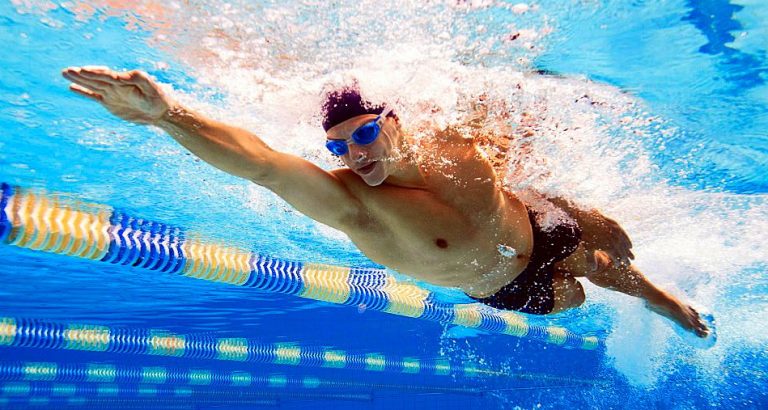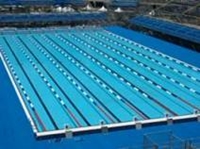Today we are going to talk about swimming, which is practiced in water, with combined movements of arms and legs, which are performed by man after learning by instinct. Therefore, swimming is an activity that can be very useful and recreational.
Therefore, it is considered one of the most complete exercises, to the point of being exercised for fun or even as a sport, to be used for therapeutic purposes in the recovery of muscular atrophy and treatment of respiratory and even cardiac problems.
Furthermore, swimming is very important as a physical activity for maintaining health and as a means of defense against drowning or even in rescue operations.
Because it moves practically all the muscles and joints in the entire body, swimming is considered one of the best physical exercises available, providing great benefits to the body, and is also the only physical activity recommended for children under 3 years old.

What should the pool be like for swimming?
The official swimming pool must be 50 meters long and 25 meters wide. Therefore, there must be eight lanes dividing the pool, each one occupied by a single swimmer, each lane must be 2.5 meters wide. And in terms of depth, the pool must be between 1.35 meters and 2 meters deep.
The water temperature should be between 25° and 28° C. But there are also higher temperatures such as 33.5° to 36.5° C, normally these temperatures are used in therapeutic pools that are intended only for limited movement, being too high for a rigorous dive. .

There are 6 different types of swimming:
1- Aquatic diving
2- Jumps
3- Synchronized swimming
4- Pure swimming
5- Water polo
6- Open water
Benefits
Swimming has many benefits, giving you more energy and a feeling of well-being, relaxation, lightness and freedom, which allow you to better face your day-to-day life. Swimming reduces pain, as the body feels lighter in the water.
The postural muscles used to stand are less stressed, allowing you to better engage other muscles while relaxing your lower back. This lightness and relaxation also protects against muscle injuries and reduces your heart rate.
Thus causing the activation of blood circulation, since when we are in water, hydrostatic pressure allows this to happen.
This way, we achieve better muscle oxygenation. Working a well-irrigated muscle has a greater potential for performance. Swimming also has a beneficial effect on breathing, as the movements made in the water tone the diaphragm, the essential muscle for breathing, which allows for better lung ventilation.
There are good reasons to practice swimming, such as the pressure of the water, which has a self-braking effect, which ends up preventing the participant from going beyond their limits, reducing the risk of muscle tears or strains. Finally, in the water the body becomes lighter, which allows you to perform athletic exercises with great ease. It is a great activity for pregnant women.
Contraindications
There are no contraindications for swimming, everyone is welcome, from babies to the elderly or people with disabilities.
It is a very inclusive sport. It is also widely used for rehabilitation or weight loss.
Many doctors also recommend it for people who have respiratory problems.
